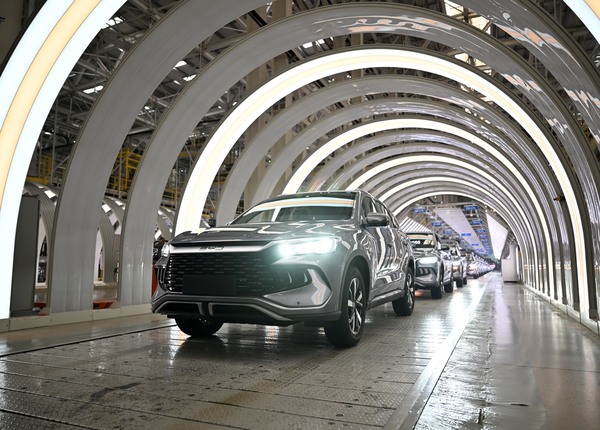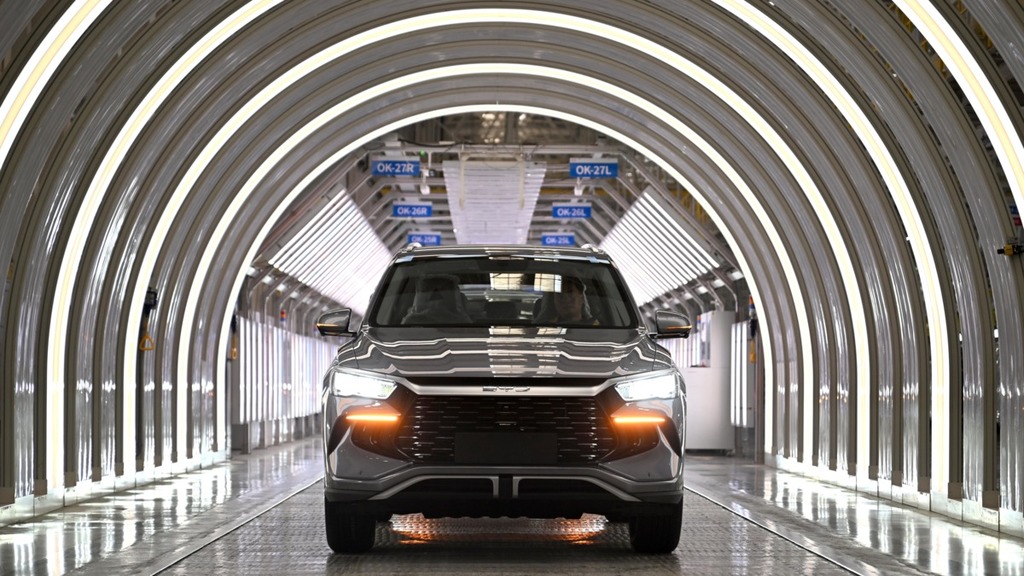The global new energy vehicle (NEV) market is developing at an astonishing pace, and sales data for the third quarter of 2025 has once again confirmed this trend. According to the latest research from TrendForce, global NEV sales reached 5.39 million units, marking a 31% year-on-year increase and demonstrating the strong momentum of electrification transformation.
Amid this wave of enthusiasm for electric vehicles, battery electric vehicles (BEVs) have performed particularly well, with sales reaching 3.71 million units—a staggering 48% increase compared to the previous year. In contrast, plug-in hybrid electric vehicles (PHEVs) saw slower growth, with sales of 1.67 million units and only a 4% year-on-year increase. This data reflects the rapid advancements in BEV technology and rising market acceptance.

Market leader BYD has firmly held onto its position as the top-selling BEV manufacturer, even though its third-quarter sales slightly declined compared to the previous quarter. Tesla benefited from a surge in U.S. demand ahead of subsidy deadlines and a recovery in the Chinese market, achieving a 29% quarterly sales growth and maintaining its position as runner-up. Notably, Chinese domestic brands such as Geely and Leapmotor are rapidly rising, capturing market shares of 6% and 4.1%, respectively, surpassing XPeng and showcasing the competitiveness of China’s electric vehicle manufacturers.
However, not all automakers have smoothly ridden this wave of electrification. Volkswagen slipped to seventh place due to a significant sales decline in China, despite growth in European and American markets. Hyundai and BMW also faced similar challenges, with their sales growth under pressure.

The PHEV market competition is even fiercer. BYD experienced a sales decline in China due to market saturation and increasing competition. Meanwhile, emerging brands like AITO, Chery, and Geely saw rapid growth, with Chery achieving a 6.6% market share in Q3. Li Auto’s market share was eroded as competition intensified in the extended-range electric vehicle segment.
Looking ahead, TrendForce predicts full-year NEV sales in 2025 will reach 20.43 million units, a 25% year-on-year increase. Although growth may slow to 12% in 2026, global sales are expected to hit 22.8 million units. However, differences in subsidy policies across regions may exacerbate disparities in electrification development. For instance, the termination of subsidies in the U.S. could weaken local demand.
As the world’s largest NEV market, China is crucial to automakers’ global strategies. Despite fierce competition, the global consensus on decarbonization and sustainable development will continue to drive NEV market expansion. For automakers, flexible strategy adjustments and balanced resource allocation across regions will be key to success.
Overall, the electric vehicle market is at a critical stage of rapid development, where technological innovation, policy support, and consumer acceptance will collectively shape this vibrant industrial ecosystem.















